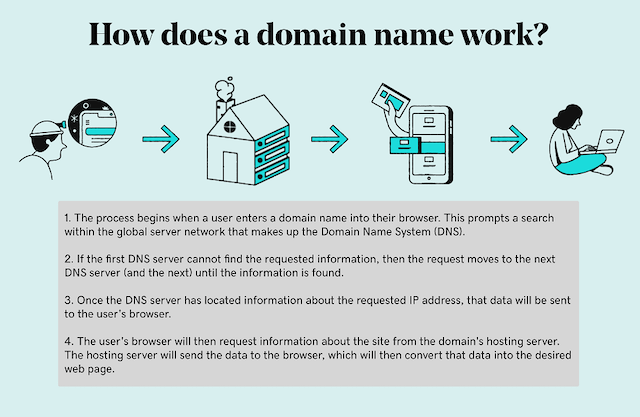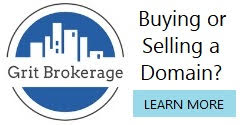Hey there! Have you ever wondered about the ins and outs of domain name infringement? Well, you’re in luck because today we’re diving deep into understanding this fascinating topic. Domain name infringement may sound like a mouthful, but it’s actually a crucial concept in the digital world. So, grab a cup of coffee, sit back, and let’s unravel the mysteries together.
Now, before we get into the nitty-gritty details, let’s start with the basics. A domain name is like your digital address on the internet, allowing users to find and access your website. It’s unique and specific to your online presence. However, sometimes people may misuse or abuse domain names that belong to someone else, and that’s where domain name infringement comes into play. It refers to the unauthorized use of someone else’s domain name, usually with the intention of misleading or deceiving others. Infringing on someone’s domain name can lead to legal consequences and potential damage to the original owner’s reputation. So, understanding domain name infringement is not only fascinating but also essential in protecting your online identity.
Now that we have a grasp of what domain name infringement is all about, let’s explore the intricacies and dive deeper into this captivating subject. Stay tuned for some eye-opening insights and practical tips to navigate the world of domain names without stepping on anyone’s digital toes.

Understanding Domain Name Infringement
Domain name infringement refers to the unauthorized use of a domain name that is identical or confusingly similar to a trademark or another established brand. This can lead to various legal issues and disputes, as it infringes upon the intellectual property rights of the trademark owner. In this article, we will delve into the concept of domain name infringement, its implications, and how it can be prevented.
Domain Name Infringement: An Overview
Domain name infringement occurs when someone registers or uses a domain name that is protected by trademark law law. This can cause confusion among consumers, as they may mistakenly associate the domain name with the trademark owner or the brand itself. It is important to note that domain name infringement is not limited to intentional acts of infringement, but can also occur unintentionally.
Implications of Domain Name Infringement
Domain name infringement can have severe consequences for both the infringer and the trademark owner. For the infringer, it can result in legal action, which may include injunctions, damages, and the transfer of the domain name to the trademark owner. On the other hand, the trademark owner may suffer reputational damage, loss of business, and dilution of their brand’s distinctiveness.
Preventing Domain Name Infringement
To prevent domain name infringement, it is crucial to conduct thorough research before registering a domain name. This includes checking for any existing trademarks that may be similar to the desired domain name. Trademark databases and search engines can be used to identify potential conflicts. Additionally, trademark monitoring services can be employed to keep track of any potential infringements.
Understanding Trademark Law
To fully comprehend domain name infringement, it is important to understand the basics of trademark law. Trademarks are registered to protect brand names, logos, slogans, and other distinctive elements that identify a specific product or service. Trademark owners have the exclusive right to use their marks, and any unauthorized use can be considered infringement.
The UDRP Process
The Uniform Domain-Name Dispute-Resolution Policy (UDRP) provides a mechanism for resolving domain name disputes outside of the court system. Under the UDRP, trademark owners can file a complaint against an infringing domain name. If the complaint is successful, the domain name may be transferred to the trademark owner or canceled altogether.
Proving Domain Name Infringement
To prove domain name infringement, the trademark owner must demonstrate three key elements: (1) the domain name is identical or confusingly similar to their trademark, (2) the domain name owner has no legitimate rights or interests in the domain name, and (3) the domain name was registered and is being used in bad faith.
The Role of Cybersquatting
Cybersquatting is a form of domain name infringement where individuals register domain names that are identical or confusingly similar to existing trademarks with the intention of selling them back to the trademark owner at a higher price. Cybersquatting is illegal and can lead to severe penalties.
Protecting Your Trademark
To protect your trademark from domain name infringement, it is essential to register your trademark with the relevant intellectual property authorities. Additionally, regularly monitor the internet for any unauthorized use of your trademark and take immediate action if infringement is detected.
Conclusion
Understanding domain name infringement is crucial for both trademark owners and individuals looking to register domain names. By familiarizing yourself with the legal implications and taking proactive steps to prevent infringement, you can safeguard your brand and avoid costly legal disputes. Remember to conduct thorough research, monitor the internet for potential infringements, and seek legal advice when necessary.
Key Takeaways: Understanding Domain Name Infringement
- Domain name infringement occurs when someone uses a domain name that is similar to another company’s brand or trademark.
- This can lead to confusion among customers and harm the original brand’s reputation.
- Registering a domain name that is intentionally similar to another brand is considered a violation of intellectual property rights.
- To avoid domain name infringement, conduct thorough research before registering a domain and ensure it does not infringe on existing trademarks or brands.
- If you believe your domain name has been infringed upon, consult a legal professional to understand your rights and options for enforcement.
Frequently Asked Questions
What is domain name infringement?
Domain name infringement refers to the unauthorized use or registration of a domain name that is similar or identical to an existing trademark or brand. It occurs when someone intentionally or unintentionally registers a domain name that can create confusion among consumers or dilute the value of an established brand.
Infringing domain names can harm the reputation and business of the trademark owner, as they may redirect traffic away from the legitimate website or be used for fraudulent activities. Domain name infringement is a violation of intellectual property rights and can result in legal consequences.
What are the common types of domain name infringement?
There are several types of domain name infringement. One common type is cybersquatting, where individuals or entities register domain names that are identical or similar to a well-known trademark or brand with the intention of selling the domain name back to the trademark owner at an inflated price. Another type is typosquatting, where domain names are registered with slight misspellings of popular brands to divert traffic or deceive users.
Other types of domain name infringement include domain name hijacking, where someone gains unauthorized control over a domain name, and reverse domain name hijacking, where a trademark owner attempts to unfairly obtain the rights to a domain name that was registered legitimately by another party.
What are the legal remedies for domain name infringement?
Trademark owners have legal remedies available to them in cases of domain name infringement. They can file a complaint under the Uniform Domain-Name Dispute-Resolution Policy (UDRP) or pursue a lawsuit in court. In UDRP proceedings, a domain name can be transferred to the rightful trademark owner if it is proven that the domain name was registered and used in bad faith.
In court, trademark owners can seek damages, injunctions, and the transfer or cancellation of infringing domain names. The outcome of legal action depends on various factors, including the strength of the trademark, evidence of bad faith registration or use, and the jurisdiction in which the case is filed.
How can domain name owners protect themselves from infringement?
Domain name owners can take several steps to protect themselves from domain name infringement. Firstly, they should register their desired domain names as soon as possible to prevent others from acquiring similar names. It is also advisable to register relevant trademarks and establish a strong online presence to increase brand recognition and establish rights.
Regular monitoring of domain name registrations and online activities is crucial to detect potential infringements. Utilizing trademark watch services and conducting periodic searches for similar domain names can help identify potential issues early on. Taking prompt action and seeking legal advice when infringement is suspected can help protect domain name owners’ rights.
What are the potential consequences of domain name infringement?
The consequences of domain name infringement can be significant. In legal proceedings, domain name infringers may be ordered to transfer the domain name to the trademark owner, pay damages for any harm caused, or face injunctions to cease using the infringing domain name. In some cases, infringers may also be required to cover the legal fees incurred by the trademark owner.
Furthermore, domain name infringement can damage the reputation and credibility of the infringer. It can result in loss of business, customer trust, and impact the overall success of the infringing entity. To avoid these consequences, it is crucial to respect intellectual property rights and refrain from registering or using domain names that may infringe on existing trademarks or brands.
Final Summary: Understanding Domain Name Infringement
Phew! We’ve reached the end of our journey into the intricate world of domain name infringement. But before we bid adieu, let’s recap what we’ve learned. Domain name infringement occurs when someone uses a domain name that is confusingly similar to an existing trademark, causing confusion among consumers. This can have serious consequences, leading to legal battles, damaged reputations, and financial losses. It’s crucial for businesses and individuals to understand the ins and outs of domain name infringement to protect their intellectual property and avoid legal troubles.
Throughout this article, we’ve explored the various aspects of domain name infringement, from the legal framework surrounding it to the steps you can take to prevent it. We’ve delved into the importance of conducting thorough trademark searches to ensure your chosen domain name doesn’t infringe upon existing trademarks. We’ve also discussed the role of the Uniform Domain-Name Dispute-Resolution Policy (UDRP) and the Anti-Cybersquatting Consumer Protection Act (ACPA) in resolving domain name disputes.
Remember, prevention is key when it comes to domain name infringement. By conducting due diligence, registering trademarks, and monitoring the online landscape, you can safeguard your brand and intellectual property from potential infringers. Stay vigilant, stay informed, and always consult with legal professionals when necessary. With these measures in place, you’ll be well-equipped to navigate the complex terrain of domain name infringement and protect what’s rightfully yours.
So, as we bid adieu to the world of domain name infringement, let’s keep these lessons close to heart and empower ourselves with knowledge. By understanding the intricacies of domain name infringement, we can navigate the digital landscape with confidence, ensuring our brands and intellectual property are safeguarded. Stay vigilant, stay protected, and let your online presence flourish. Cheers to a future free from domain name woes!







